Sapelli
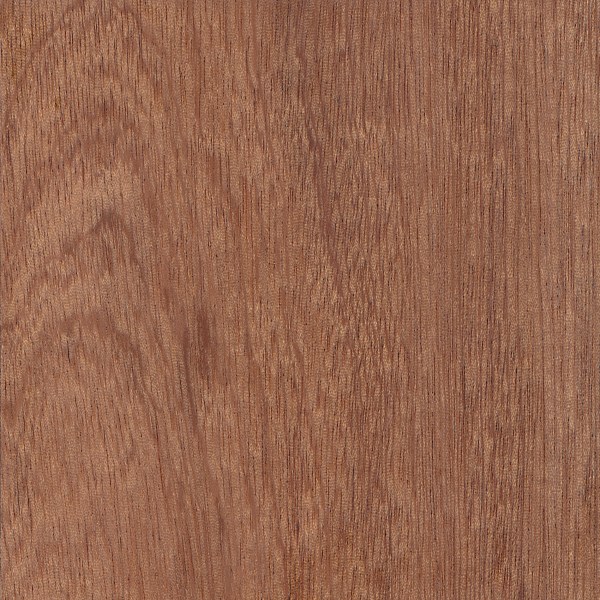
 Sapelli
Sapelli
- Kind:
- Lumber
- Category:
- Hard wood
- Scientific Name:
- Entandrophragma cylindricum
- Common Names:
- Aboudikro (Ivory Coast), Penkowa (Ghana), Myuvu (Uganda), Sapelli (Cameroon), Libuyu (Zaire).
- Distribution:
- Ranging from the Ivory Coast to the Cameroons and eastward through Zaire to Uganda. Occurs in evergreen, deciduous, and transitional forest formation.
- Average Density:
- 0.69
- General Characteristics:
- Heartwood a medium to fairly dark reddish brown or purplish brown; sapwood whitish or pale yellow, distinct. Texture rather fine; grain interlocked, sometimes wavy, producing a narrow, uniform, roe figure on quartered surfaces; lustrous; without a distinctive taste but with a cedarlike scent.
- Work Properties:
- Works fairly well with hand and machine tools, tends to tear interlocked grain in planing, saws easily, finishes well, good gluing and nailing properties, satisfactory peeling and slicing
- Durability:
- Heartwood is moderately durable, resistant to termite attack variables. Sapwood is liable to powder-post beetle attack.
- Usage:
- Furniture and cabinet work, decorative veneers, plywood, joinery, flooring, paneling.
- Zone:
- Tropical
Okoume
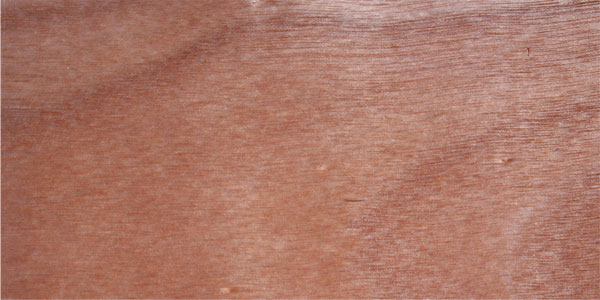
 Okoume
Okoume
- Kind:
- Lumber
- Category:
- Hard wood
- Scientific Name:
- Aucoumea klaineana Pierre
- Common Names:
- Gaboon (U.K.), Angouma, Loukoumi, N’Koumi (Gabon).
- Distribution:
- Confined to Gabon, Rio Muni, and Congo-Brazzaville; rather common, and extensively planted within its natural range
- Average Density:
- 0.44
- General Characteristics:
- Heartwood salmon pink to light pinkish brown; sapwood narrow, whitish or pale gray, not clearly demarcated from heartwood. Texture medium, grain straight, shallowly interlocked, sometimes wavy; sometimes lustrous; without characteristic odor or taste. Silica content of about 0.12 to 0.16% is reported.
- Work Properties:
- Saw teeth blunt rather quickly due to the silica content; machined surfaces are somewhat wooly but can be worked to a good finish; glues and nails well; easy to peel into veneer, bolts generally heated.
- Durability:
- Heartwood is not resistant to attack by decay fungi and is susceptible to termite attack.
- Usage:
- Plywood, furniture components, joinery, paneling, blockboard, particleboard, light construction.
- Zone:
- Tropical
Iroko
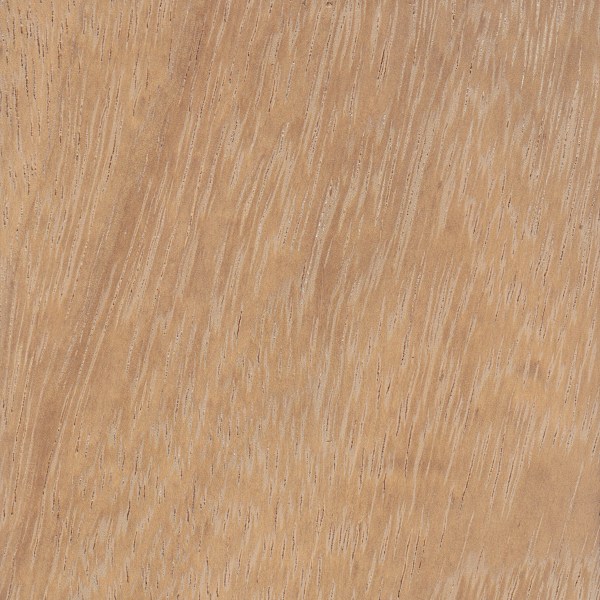
 Iroko
Iroko
- Kind:
- Lumber
- Category:
- Hard wood
- Scientific Name:
- Milicia excelsa, M. regia (syn. Chlorophora excelsa, C. regia)
- Common Names:
- Odoum, Odum
- Distribution:
- Tropical Africa.
- Average Density:
- 0.68
- General Characteristics:
- Heartwood is usually a yellow to golden or medium brown, with color tending to darken over time. Iroko has a medium to coarse texture, with open pores and an interlocked grain.
- Work Properties:
- Generally easy to work, with the exception of its interlocked grain, which may cause some tearout during surfacing operations. Also, deposits of calcium carbonate are sometimes present, which can have a significant dulling effect on cutters. Iroko glues and finishes well.
- Durability:
- Iroko is very durable, and is resistant to both rot and insect attack; it’s sometimes used as a substitute for Teak.
- Usage:
- Given the high prices of genuine Teak, Iroko could be considered a low-cost alternative. The wood is stable, durable, and has an overall look that somewhat resembles Teak. Some common uses for Iroko include: veneer, flooring, furniture, cabinetry, boatbuilding, turned items, and other small specialty wood items.
- Zone:
- Tropical
IPE
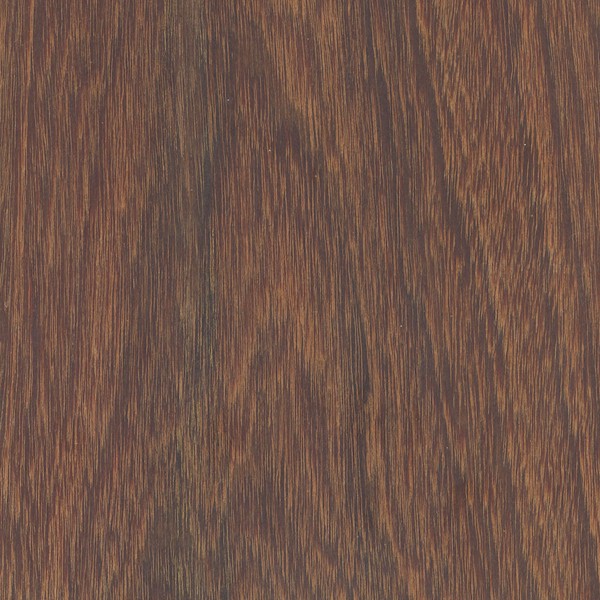
 IPE
IPE
- Kind:
- Lumber
- Category:
- Hard wood
- Scientific Name:
- Tabebuia serratifolia Nichols
- Common Names:
- Ipe (Brazil), Lapacho negro (Paraguay, Argentina).
- Distribution:
- Throughout continental tropical America and some of the Lesser Antilles. The tree grows on a variety of sites, from ridge tops to riverbanks and marsh forests.
- Average Density:
- 1.04
- General Characteristics:
- Heartwood olive brown to blackish, often with lighter or darker striping, often covered with a yellow powder; sharply demarcated from the whitish or yellowish sapwood. Texture fine to medium; luster low to medium; grain straight to very irregular; rather oily looking; without distinctive odor or taste.
- Work Properties:
- Moderately difficult to work especially with hand tools; has a blunting effect on cutting edges, finishes smoothly except where grain is very roey The fine yellow dust produced in most operations may cause dermatitis in some workers.
- Durability:
- Heartwood is very resistant to attack by decay fungi and termites; not resistant to marine borers. T. guayacan however, is reported to have good resistance in Panama waters.
- Usage:
- Railroad crossties, heavy construction, tool handles, turnery, industrial flooring, textile mill items, decorative veneers.
- Zone:
- Tropical
Garapa
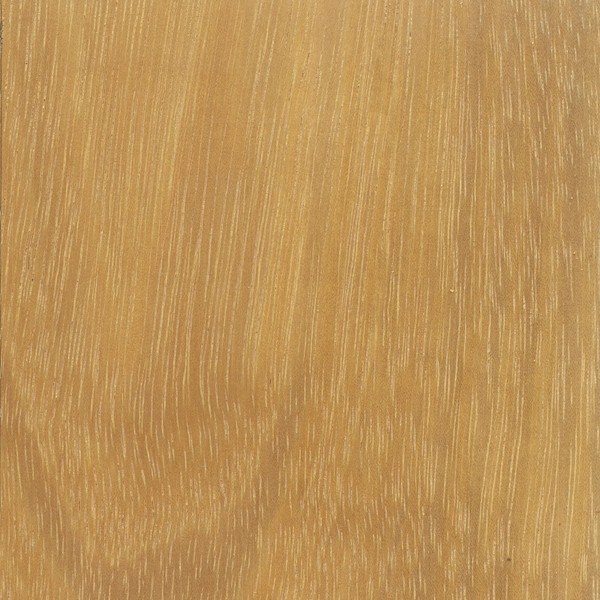
 Garapa
Garapa
- Kind:
- Lumber
- Category:
- Hard wood
- Scientific Name:
- Apuleia leiocarpa Macbr.
- Common Names:
- Garapa
- Distribution:
- South America.
- Average Density:
- 0.83
- General Characteristics:
- Garapa has a golden to yellowish brown color, which darkens with age. The wood is fairly chatoyant, and appears to shift from dark to light coloring in different lighting angles. (This is evident in the scanned image of the sealed wood below, which only appears as patches of light/dark wood.)Garapa has a medium texture and small open pores. The grain is usually straight, but can also be interlocked.
- Work Properties:
- Garapa is fairly easy to work, considering it?s density. It glues and finishes well, and is about average for dimensional stability.
- Durability:
- Garapa is a naturally durable hardwood, though it is susceptible to insect attack.
- Usage:
- Garapa is occasionally exported from South America for use as flooring or exterior decking material. The wood is also used in docks and boatbuilding.
- Zone:
- Tropical
Ebony
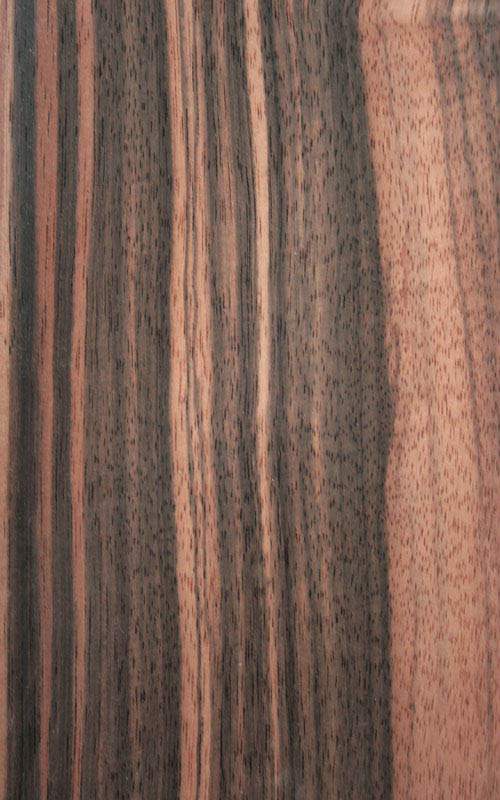
 Ebony
Ebony
- Kind:
- Lumber
- Category:
- Hard wood
- Scientific Name:
- Diospyros crassiflora Hiern.
- Common Names:
- Eb?ne
- Distribution:
- Commercial supplies are mostly from Equatorial West Africa. Forms almost pure groups near riverbanks.
- Average Density:
- 0.83
- General Characteristics:
- Heartwood uniform jet black or black brown or streaked; sapwood pink colored when freshly cut, darkening to a pale red brown, very variable in width. Texture very fine; grain straight to slightly interlocked or somewhat curly. Sawdust may cause dermatitis.
- Work Properties:
- Heartwood is difficult to work with hand and machine tools, has a pronounced dulling effect on tool edges, may pick up in planing if grain is irregular, and takes an excellent polish. Good steam-bending properties.
- Durability:
- Heartwood rated as very durable, moderately to highly resistant to termite attack.
- Usage:
- Parts of musical instruments, handles for cutlery and tools, brush backs, carvings, turnery, inlaid work.
- Zone:
- Tropical
Difou
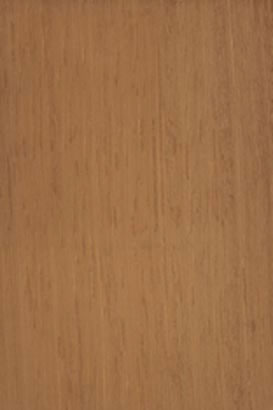
 Difou
Difou
- Kind:
- Lumber
- Category:
- Hard wood
- Scientific Name:
- Morus mesozygia Stapf.
- Common Names:
- Wonton (Ghana), Aye (Nigeria), Kankate (Zaire).
- Distribution:
- Found on the edge of the humid rain forests from Senegal to Cameroon and Gabon; also in dry savanna formations. Widely planted as a shade and farm boundary tree.
- Average Density:
- 0.84
- General Characteristics:
- Heartwood yellow when freshly cut darkening on exposure to a golden- or coffee brown; sapwood wide, grayish white, distinct. Texture fine to moderately coarse; grain shallowly interlocked; moderately high luster.
- Work Properties:
- Works with moderate ease with most hand and machine tools, good sawing characteristics; glues well; takes a good finish; veneers well.
- Durability:
- Heartwood vulnerable to attack by decay fungi and liable to termite attack.
- Usage:
- Joinery, turnery, flooring, veneer.
- Zone:
- Tropical
Burmese Teak
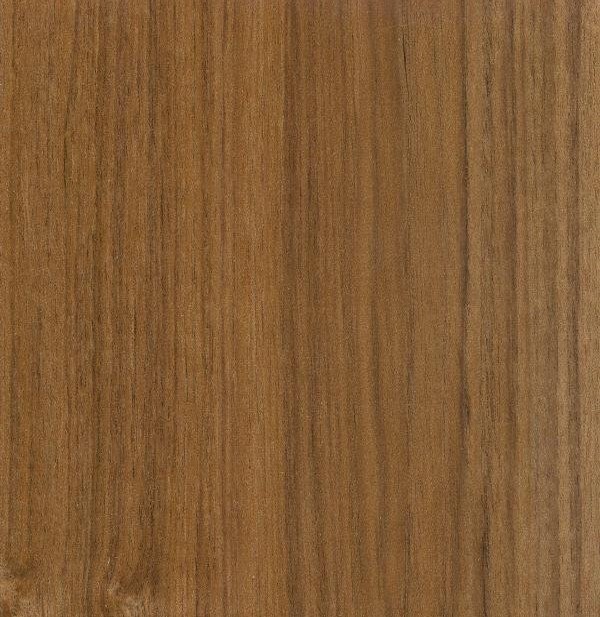
 Burmese Teak
Burmese Teak
- Kind:
- Lumber
- Category:
- Hard wood
- Scientific Name:
- Tectona grandis
- Common Names:
- Kyun (Burma), Teck (French), Teca (Spanish).
- Distribution:
- Native to India, Burma(Myanmar), Thailand, Indochina, including Indonesia, particularly Java. Extensively cultivated in plantations within its natural range as well as in tropical areas of Africa and Latin America.
- Average Density:
- 690KG
- General Characteristics:
- Heartwood dark golden yellow, turning a dark brown with exposure, often very variable in color when freshly machined showing blotches and streaks of various shades; sapwood pale yellowish, sharply demarcated. Grain straight, sometimes wavy; texture coarse, uneven (ring porous); dull with an oily feel; scented when freshly cut. Dust may cause skin irritations. Silica content variable, up to 1.4% is reported.
- Work Properties:
- Easily worked with both hand and machine tools and dresses to a very smooth finish if tools are kept sharp; glues moderately well despite its oily nature. Blunting of cutters can be rather severe. As noted, it may cause dermatitis in some individuals.
- Durability:
- Heartwood is rated as very durable with respect to decay fungi and termites; not immune to marine borers.
- Usage:
- Shipbuilding, joinery, furniture, flooring, carving, cabinetwork, paneling, turnery, tanks and vats, fixtures requiring high resistance to acids.
- Zone:
- Tropical
Brazilian Teak
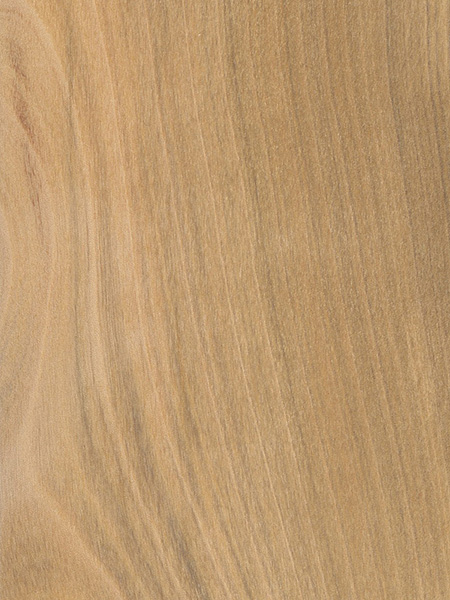
 Brazilian Teak
Brazilian Teak
- Kind:
- Lumber
- Category:
- Hard wood
- Scientific Name:
- Cordia spp. (C. alliodora, C. goeldiana)
- Common Names:
- Brazilian Teak, Freijo, Laurel Blanco
- Distribution:
- From southern Mexico to Brazil
- Average Density:
- 565 kg/m3
- General Characteristics:
- Freijo is known by an abundance of common names, (such as Laurel Blanco), and is a relative of the more commonly-known Bocote and Ziricote. Its appearance.
- Work Properties:
- Easy to work with hand or machine tools. Glues, turns, and finishes well.
- Durability:
- Variable, generally depending on the darkness of the wood. Rated as durable, though lighter-colored boards are less durable. Mixed insect resistance.
- Usage:
- Veneer, furniture, turned objects, cabinetry, boatbuilding, and millwork.
- Zone:
- Tropical
Berlinia
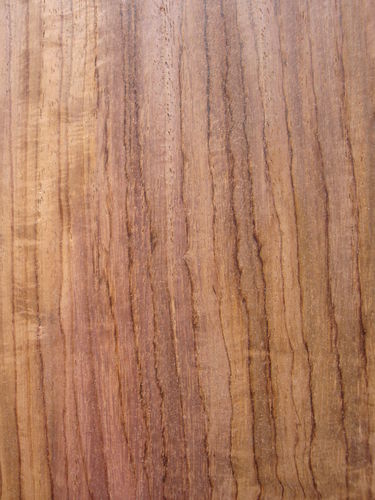
 Berlinia
Berlinia
- Kind:
- Lumber
- Category:
- Hard wood
- Scientific Name:
- Berlinia bracteosa Benth.
- Common Names:
- Ebiara (Cameroun), Pocouli ( Angola)
- Distribution:
- West Africa and reaching into Zaire. Found in various forest types: savanna formations, marshy localities, or dense high forests.
- Average Density:
- 0.7
- General Characteristics:
- Heartwood brown, pinkish brown to deep red brown, with dark purple or brown streaking; sapwood is rather wide, whitish, often with a pink tint, clearly demarcated. Texture medium to coarse; grain straight, interlocked, or irregular; without characteristic odor or taste when dry. Traumatic gum ducts frequently present.
- Work Properties:
- Saws easily and generally work well with hand and machine tools but there is some tearing of interlocked grain; good gluing properties; rated as a moderate steam-bending wood.
- Durability:
- Heartwood durability variable with species, generally moderately resistant to attack by decay fungi and moderately resistant to termite attack. Logs liable to severe attack by ambrosia beetles and sapwood vulnerable to powder-post beetles.
- Usage:
- Heavy construction, furniture and cabinet work, decorative veneers, paneling. Often suggested as an oak substitute.
- Zone:
- Tropical
Bete
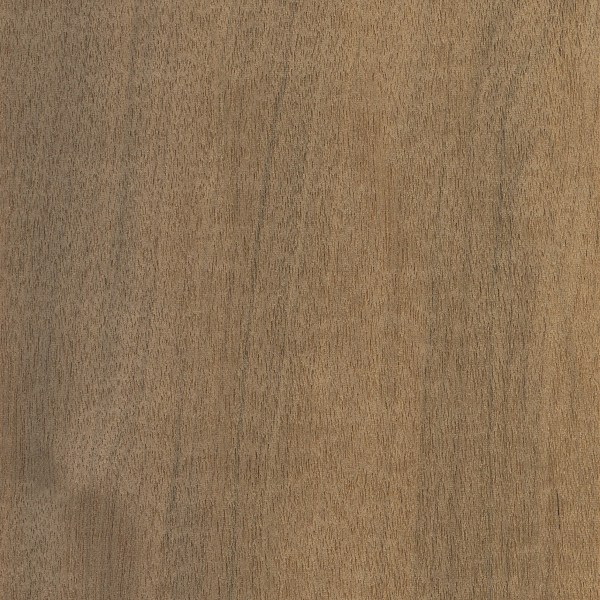
 Bete
Bete
- Kind:
- Lumber
- Category:
- Hard wood
- Scientific Name:
- Mansonia altissima A. Chev.
- Common Names:
- Bete (Ivory Coast)
- Distribution:
- Occurs in the deciduous forest type from ivory Coast to Cameroon.
- Average Density:
- 0.66
- General Characteristics:
- Heartwood yellow brown or dark gray brown, frequently with a purplish cast, often shows light and dark bands; sapwood whitish, sharply demarcated. Texture fine to medium; grain generally straight; luster low to medium. Resembles American black walnut. Lacks a distinct odor or taste.
- Work Properties:
- Works easily with hand and machine tools with little dulling of cutters, has good nailing and gluing properties, rated as a good steam-bending wood. Sawdust may cause nose and throat irritation.
- Durability:
- Heartwood is very durable and highly resistant to termite attack
- Usage:
- High quality cabinet and furniture work, joinery, turnery, decorative veneers Bark contains a cardiac poison of the digitalis group. Used as an alternative for walnuts.
- Zone:
- Tropical
Avodire
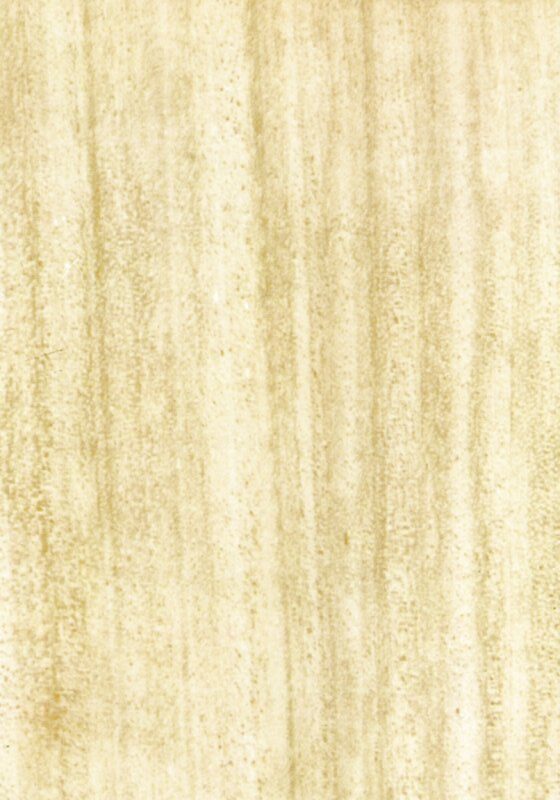
 Avodire
Avodire
- Kind:
- Lumber
- Category:
- Hard wood
- Scientific Name:
- Turraeanthus africana Pellegr.
- Common Names:
- Apapaye (Ghana), Lusamba (Zaire), Apaya (Nigeria).
- Distribution:
- From Sierra Leone to the Congo region and Angola; most common in the eastern region of the Ivory Coast, scattered elsewhere. Found near streams and lakes.
- Average Density:
- 0.58
- General Characteristics:
- Heartwood creamy white to pale yellow, darkening to a gold yellow; sapwood not differentiated. Texture moderately fine, grain straight, wavy, or irregularly interlocked; high natural luster; has an attractive mottled figure if quartered.
- Work Properties:
- Timber saws are well and easy to work with hand and machine tools, planning a cutting angle of 15 to 20 degrees is suggested to avoid tearing of interlocked grain, good gluing and veneering properties. Dermatitis, nose bleeding, and other symptoms reported in woodworkers.
- Durability:
- Heartwood is nondurable; reported to be moderately resistant to nonresistant to termite attack.
- Usage:
- Furniture, fine joinery, decorative veneers, cabinetwork, paneling
- Zone:
- Tropical
Aniegre

 Aniegre
Aniegre
- Kind:
- Lumber
- Category:
- Hard wood
- Scientific Name:
- Aningeria spp.
- Common Names:
- Aniegre(Cameroun)
- Distribution:
- The genus is widespread in tropical Africa, particularly common in parts of East Africa.
- Average Density:
- 0.57
- General Characteristics:
- Heartwood yellowish white, pale brown, or pinkish brown, darkening slightly after exposure; sapwood not well demarcated. Texture medium to coarse; grain usually straight, sometimes wavy; lustrous; faint cedarlike odor.
- Work Properties:
- Generally reported to saw and machine well, but some species are siliceous and have a blunting effect on cutters; rather difficult to finish; cuts well on rotary lathe or slicer.
- Durability:
- The wood is perishable, little resistance to attack by decay fungi and termites, liable to blue stain.
- Usage:
- General carpentry, joinery, veneer and plywood, furniture components.
- Zone:
- Tropical
Amarante
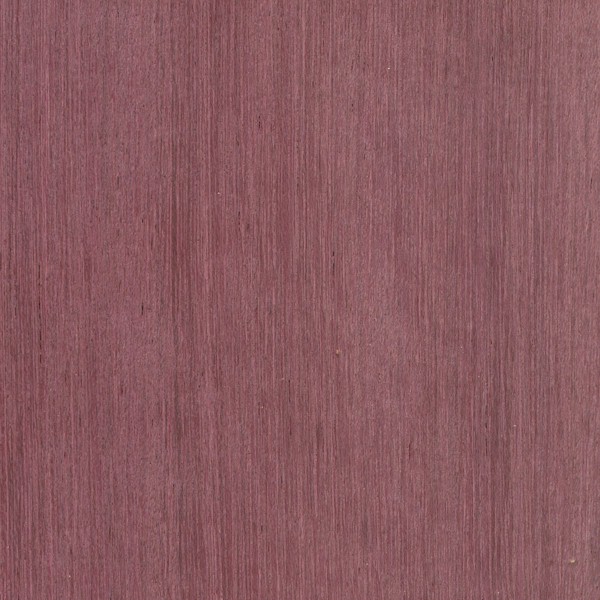
 Amarante
Amarante
- Kind:
- Lumber
- Category:
- Hard wood
- Scientific Name:
- Peltogyne spp.
- Common Names:
- Purpleheart , Pau Roxo.
- Distribution:
- Center of distribution in the north-middle part of the Brazilian Amazon region; combined range of all species from Mexico through Central America and southward to southern Brazil.
- Average Density:
- 0.87
- General Characteristics:
- Heartwood brown when freshly cut becomes deep purple upon exposure, eventually turning to a dark brown sharply demarcated from the off-white sapwood. Texture medium to fine; luster medium to high, variable; grain usually straight, sometimes wavy, roey, or irregular; without distinctive odor or taste.
- Work Properties:
- Moderately difficult to work with either hand or machine tools, dull cutters exude a gummy resin when heated by dull tools; slow feed rates and specially hardened cutters are suggested. Turns smoothly, easy to glue, and finishes well.
- Durability:
- Heartwood is rated as highly durable in resistance to attack by decay fungi; very resistant to dry-wood termites; but little resistance to marine borers.
- Usage:
- Turnery, marquetry, cabinets, fine furniture, parquet flooring, tool handles, heavy construction, shipbuilding, many specialty items (billiard cue butts, chemical vats, carving).
- Zone:
- Tropical
Amazakoue
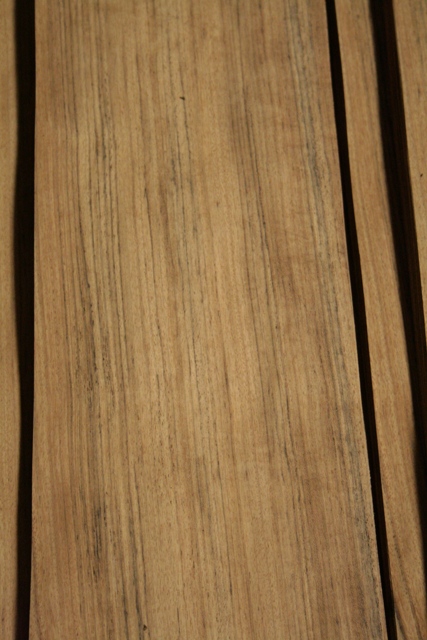
 Amazakoue
Amazakoue
- Kind:
- Lumber
- Category:
- Hard wood
- Scientific Name:
- Guibourtia ehie.
- Common Names:
- Ovangkol ,Amazakoue (Ivory Coast). Hyeduanini, Anoky?( Congo )
- Distribution:
- Ivory Coast, Ghana, Southern Nigeria, and Gabon. Prefers closed rain forests and transitional forests, often in small groups.
- Average Density:
- 0.82
- General Characteristics:
- Heartwood yellow brown to dark brown with gray to almost black stripes; sapwood yellow white, about 4 in. wide, clearly demarcated. Texture moderately coarse; grain straight to interlocked; attractive figure; unpleasant odor when freshly cut.
- Work Properties:
- Saws slowly but well for its density, works fairly easily with hand and machine tools, planes to a good finish, must be heated before slicing into veneers. May stain when in contact with metal.
- Durability:
- Heartwood moderately durable, rarely attacked by termites.
- Usage:
- Fine furniture and cabinet work, turnery, decorative veneers, flooring. A walnutlike wood. Yields a gum copal used in pharmaceuticals and as a base for varnishes.
- Zone:
- Tropical
Afromosia

 Afromosia
Afromosia
- Kind:
- Lumber
- Category:
- Hard wood
- Scientific Name:
- Pericopsis elata syn. Afrormosia elata
- Common Names:
- Kokrodua (Ghana), Assamela (Ivory Coast).
- Distribution:
- West Africa, but mainly Ghana and the Ivory Coast, gregarious, grows in both wet and dry areas.
- Average Density:
- 0.74
- General Characteristics:
- Heartwood yellow turning to a dark brown on exposure sapwood narrow, lighter in color and clearly demarcated. Texture moderately fine; grain straight to interlocked; some resemblance to teak.
- Work Properties:
- Works well with hand and machine tools, finishes cleanly, turns satisfactorily, good gluing, moderate steam-bending properties. Sawdust reported to be an eye irritant, good ventilation needed.
- Durability:
- Heartwood is rated as very durable and highly resistant to termite attack. Dark stains are liable to appear if in contact with iron under damp conditions.
- Usage:
- Boatbuilding, joinery, flooring, furniture, decorative veneers, considered an excellent teak substitute.
- Zone:
- Tropical
